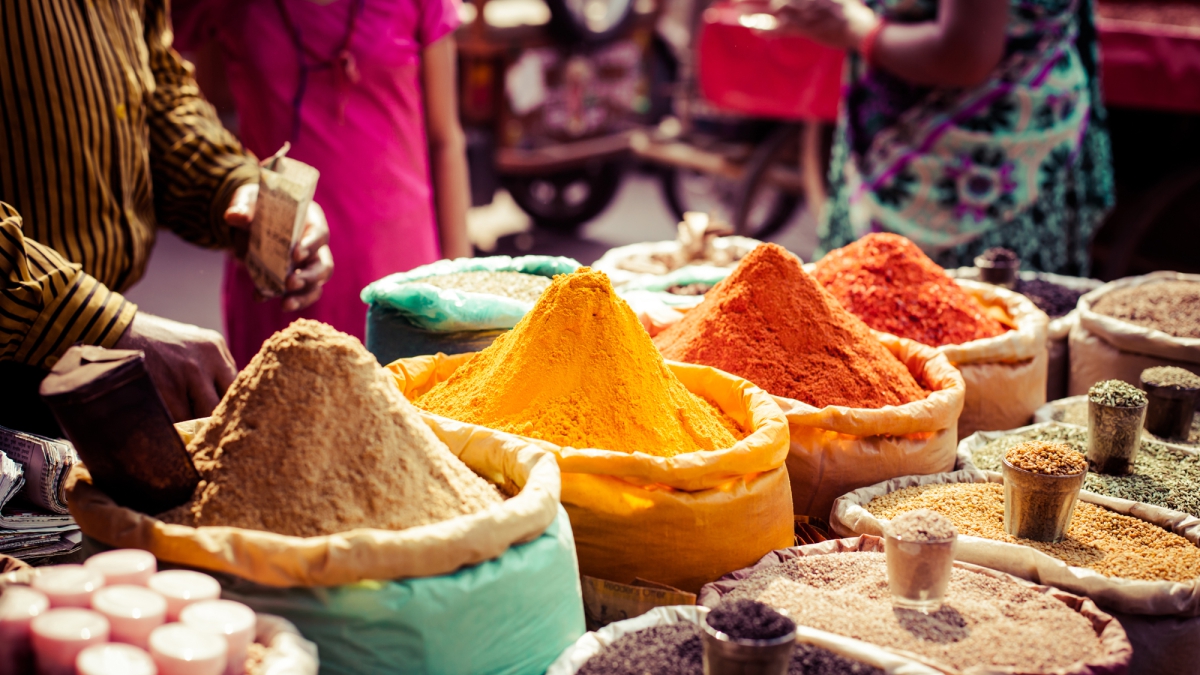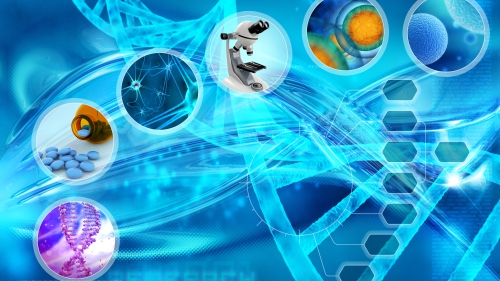For the Love of Spice!

In 1492, Christopher Columbus set off to sail the world in hopes of finding a better trade route to India. Thus began the colonization of the west as we know it. But why was Columbus so desperately seeking to reach India? One word: spices.
Spices of all sorts are now used globally to enhance food quality and taste. Spices can range from a vast scale of mild to extreme levels of heat. Today, there are a variety of food festivals dedicated to hosting competitions of consuming spicy food. Spicy food can be found across cultures and borders to bring people the experience of indulging in many exotic cuisines. This global bond of enjoying spicy food is one that is inherently scientific in nature.
There are two chemical categories in which spices are placed: piperine (also known as Bioperine) and capsaicin. While piperine is the active ingredient exclusive to black pepper, “Capsaicin occurs in the fruits of plants in the Capsicum family, including jalapeño peppers, cayenne peppers, and other chili peppers” (Alfaro 2019). According to Samar Kullab RD, LDN, “When we eat a pepper, capsaicin binds to nerve receptors on our tongue called TRPV1. These receptors then send a signal to our brain which causes our body to respond to it as a “threat”, making our nose run and our eyes to tear up.” Although this might seem like an unattractive result of consuming spicy food, there are physiological explanations why our bodies enjoy enduring that pain. According to Spruce Eats, capsaicin can also provide the feeling of euphoria from the production of released endorphins (Alfaro 2019). Research done by Paul Bosland, co-founder and director of the New Mexico State University’s Chili Pepper Institute, shows that, "The endorphins work to block the heat. The body produces them in response to the heat, which it senses as pain" (Carollo 2012). This self-inflicted pain is also a uniquely human trait. The preference of choosing spicy peppers for consumption is not usually found in animals. (Alfaro 2019).
In regards to capsaicin, the level of spiciness can be measured according to heat units on the Scoville Scale, also referred to as SHU (Scoville Heat Units). Because blackpepper comes from peppercorn and falls under the piperine family, it does not get measured on the SHU scale. As Danilo Alfaro puts it, “the SHU is a method of describing how many drops of sugar water are required to dilute the heat of any given pepper. SHU range from thousands for more mild peppers to millions for the hottest peppers.” (Alfaro 2019). He also describes the capsaicin compound as “oil-like” and explains that for this reason, drinking water is an ineffective solution to soothe the spiciness. A more effective solution would be cold dairy products like milk or yogurt. (Alfaro 2019).
If consumed on the higher end of the SHU scale, capsaicin can have some dangerous effects on the body. These include symptoms such as abdominal pain, burning diarrhea, nausea, and vomiting. Exposure to the eyes can also cause pain, intense tearing, blepharospasm, and conjunctivitis (Saljoughian 2009). However, in safe amounts, there are quite a few health benefits of consuming peppers from the capsicum family. They have been used to treat a variety of issues, including common ailments such as ear infections, arthritis pain, neuropathic pain, and dermatologic ailments such as psoriasis. Some research also indicates that it may play a role in things like appetite suppression for weight loss as well as the killing of prostate cancer cells. (Carollo 2012).
Piperine has also been shown to have a variety of health benefits. According to BodyNutrition.Org, piperine can help as an inhibitor to expel drugs and supplements through urine, allowing the body to benefit from the intake of those drugs and supplements for a longer time. It is also known as an anti-inflammatory, commonly cited in aiding with arthritic pain. (BodyNutrition 2018). NeuroHacker Collective has also cited benefits of piperine to include improved metabolism, raised levels of dopamine and serotonin, improved immune system function, and even improved mental skills and memory. (NeuroHacker Collective 2018). In most cases, the amount of black pepper used in foods is safe and does not pose a potential issue; however, there are a few risks associated with piperine that should be considered.
According to BodyNutrition, “One of the most worrisome of these possible side effects is the fact that black pepper (including the piperine it contains) is a possible carcinogen...There have been several preliminary studies that list cancer as a side effect of long-term use of piperine, but this side effect was most commonly noted when the piperine was used as a topical agent, not as a food product.” Furthermore, “The same processes that piperine employs to aid in the absorption of curcumin and other supplements are also processes that can cause major problems in the body. (Patel 2019). While piperine can make curcumin 2000% more effective in the body, it can also stop a particular protective measure the body takes against toxic xenobiotics” (Srinivasan
2007). For this reason, it is recommended to limit the dosage of piperine to 5-15mg a day (BodyNutrition 2018).
When it comes to consuming spicy food, Samar Kullab RD, LDN suggests these points of consideration:
The pros:
- It may keep your heart healthy by lowering levels of LDL. LDL is known as “bad cholesterol”. “Bad cholesterol” increases the risk of heart disease.
- It may promote weight loss and increase your metabolism. While many factors contribute to weight gain, a little spice may help kick start your metabolism, which means you will burn more calories.
- It can be used as a pain reliever. Since capsaicin causes heat, it’s used in topical creams to help with aches and injuries.
- It contributes to a healthy gut. Capsaicin attaches to receptors in your digestive tract, creating a chemical called anandamide. This chemical has been proven to be anti-inflammatory. It may fight off H.pylori, a bacteria known to cause stomach ulcers.
- It may help prevent cancer. When ingested in safe amounts, research has shown that capsaicin may slow down or even kill cancer cells.
- It can help relieve symptoms of the cold and flu. Your body reacts to spice as a threat, causing your nasal passages to open up and ultimately relieving congestion.
The cons:
- While recent studies have shown that spicy foods do not cause ulcers, if you already have an ulcer (which may be caused by NSAIDS, H.Pylori, etc) it is very important to limit or avoid spicy foods as they can be very irritating to an already present ulcer.
- Spicy foods may cause abdominal pain in some people. They have been proven to worsen symptoms in those with indigestion, GERD, or IBS.
“Overall, it’s important that we are being intuitive eaters and paying attention to how foods are making our bodies feel. Ask your pharmacist if your medications may have a food-drug interaction considering there are known topical capsicum interactions. Remember, spices are sold in various blends and mixes. It is essential to always check the nutrient labels and avoid spices with added salts. Many people season their foods with salt, then use a pre-mixed spice not being aware there is salt included, and high amounts of salt are linked to hypertension. Try making your own spice mixes at home or buy ones without the added salt. If you aren’t sure how your body responds to foods that people are commonly allergic, sensitive, or intolerant to, I’d advise you to create a food journal. Write down how foods make you feel and rule out the ones causing symptoms. Preparing food and feeling connections will help bring awareness of what changes need to be made and optimize your health status,” says Samar Kullab.
*****
Amirah Nasir is the programs associate at the Abrahamic Center for Cultural Education (ACCE), an Islamic art gallery and resource center located in downtown Chicago. She studied anthropology and sociology at the University of Illinois at Urbana-Champaign.
Reprinted from the Winter 2019 issue of Halal Consumer© magazine with permission from the Islamic Food and Nutrition Council of America (IFANCA®) and Halal Consumer© magazine.

















